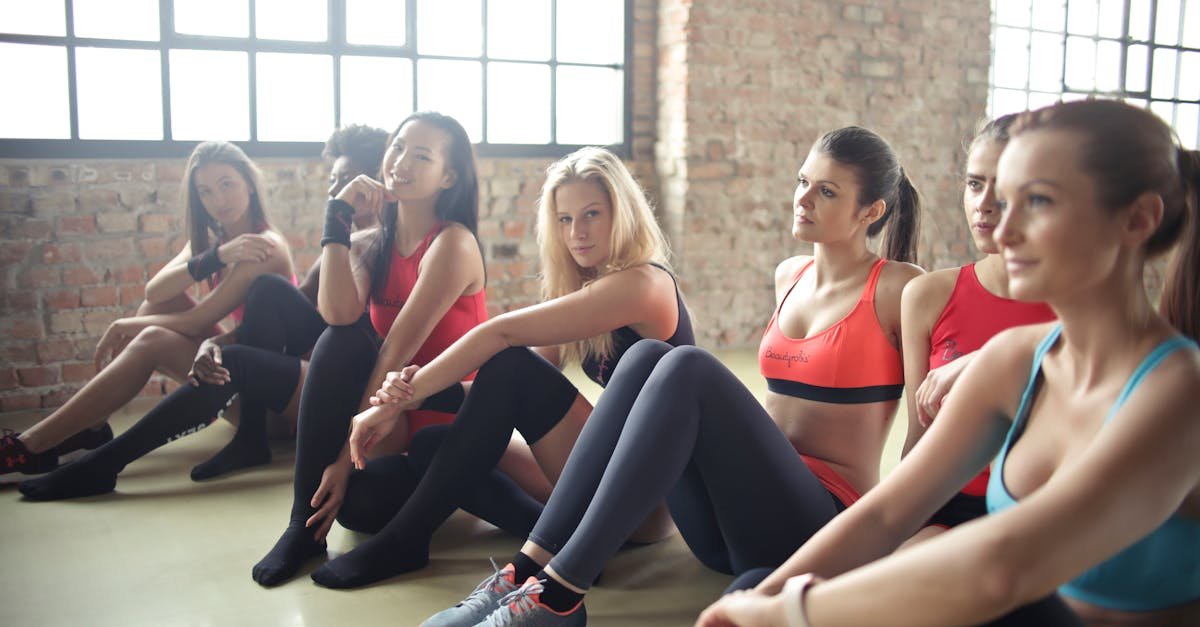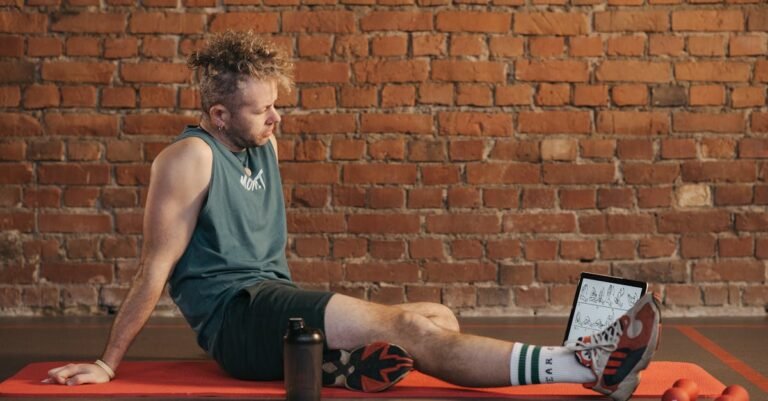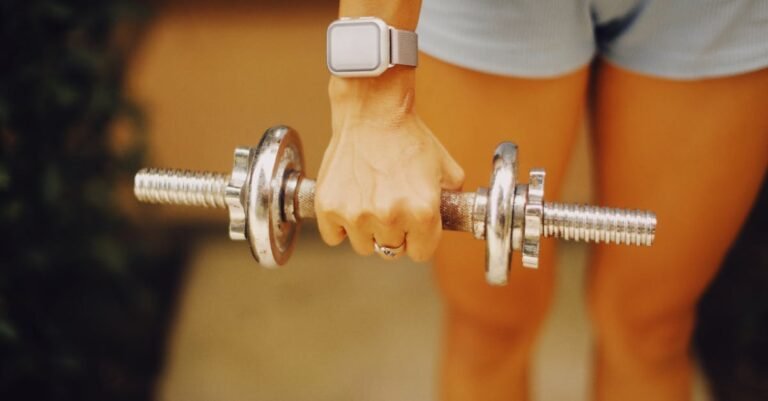Table of Contents
- Why Cool Down Stretches are Non Negotiable After Your Workout
- Understanding the “Why”: The Science Behind Cooling Down
- Static vs. Dynamic Stretching: What’s Best for Cooling Down?
- Essential Cool Down Stretches for Your Post Exercise Routine
- How Long Should You Cool Down and Stretch?
- Integrating Cool Down Stretches into Different Workouts
- Common Cool Down Mistakes to Avoid
- Listening to Your Body: The Golden Rule
- Conclusion: Make Cooling Down Your Fitness Finisher
- Frequently Asked Questions (FAQs)
Why Cool Down Stretches are Non Negotiable After Your Workout
Alright, let’s talk. You just crushed your workout. You’re sweaty, maybe a little shaky, and feeling that awesome post exercise buzz. What’s the first thing you want to do? Probably hit the shower, grab some water, or just collapse onto the nearest comfortable surface, right? I get it. But hold on just a second! Before you call it quits, there’s one crucial step you absolutely shouldn’t skip: the cool down, specifically incorporating some good old fashioned stretches.
Think of your workout as revving up a high performance engine. You wouldn’t just slam on the brakes and turn it off immediately after hitting top speed, would you? No way! You’d let it idle, cool down gradually, ensuring everything settles back nicely. Your body deserves that same gentle transition. Skipping the cool down is like hitting the emergency brake on your physiological systems. It might seem like a time saver, but trust me, investing just 5 to 10 minutes in a proper cool down routine packed with stretches can pay huge dividends for your recovery, flexibility, and overall fitness journey. It’s not just an optional add on; it’s an integral part of a smart, effective, and sustainable exercise plan. Let’s dive into why this often overlooked finisher is so incredibly important.
Understanding the “Why”: The Science Behind Cooling Down
So, why all the fuss about cooling down? It’s not just about feeling good (though that’s a definite perk!). There’s some real science happening behind the scenes when you take the time to gently transition your body from a state of high exertion back to rest.
Bringing Your Body Back to Baseline
During exercise, your heart is pumping like crazy, delivering oxygen rich blood to your working muscles. Your blood vessels are dilated, your breathing is rapid, and your core body temperature is elevated. A cool down, typically involving light aerobic activity like walking followed by stretching, helps gradually lower your heart rate and blood pressure back towards their resting levels. This prevents blood from pooling in your extremities (like your legs after a run), which can sometimes cause dizziness or even fainting if you stop abruptly. It’s like guiding a plane in for a smooth landing rather than just cutting the engines mid air. This gradual return to normal helps your circulatory system readjust efficiently.
Reducing Muscle Soreness (DOMS Explained)
Ah, DOMS – Delayed Onset Muscle Soreness. That lovely feeling 24 to 72 hours after a tough workout where even climbing stairs feels like scaling Mount Everest. While stretching during your cool down won’t eliminate DOMS entirely (it’s primarily caused by microscopic tears in muscle fibers leading to inflammation), it can play a role in minimizing the discomfort. How? Gentle stretching helps improve circulation to the muscles you just worked. Better blood flow means more efficient delivery of nutrients needed for repair and faster removal of metabolic byproducts (like lactate, though its role in soreness is often debated). Think of it as helping the clean up crew get to the construction site (your recovering muscles) a bit faster. It might not prevent all the aches, but it can certainly take the edge off and potentially shorten the duration of that stiffness.
Enhancing Flexibility and Range of Motion
This is perhaps the most direct and noticeable benefit of post exercise stretching. When your muscles are warm and pliable after a workout, they are much more receptive to stretching. It’s like trying to bend cold plastic versus warm plastic – the warm plastic bends much more easily. Regularly performing static stretches during your cool down helps to lengthen muscle fibers and improve the elasticity of connective tissues (like tendons and ligaments) over time. This leads to increased flexibility and a greater range of motion around your joints. Why does this matter? Better flexibility can improve your performance in future workouts, reduce your risk of injuries (like strains and sprains), and even make everyday activities feel easier and more comfortable. Think better posture, easier reaching, and less general stiffness.
Promoting Relaxation and Mental Wind Down
Exercise is fantastic for stress relief, but the workout itself is a physical stressor. The cool down period provides a valuable opportunity to shift gears mentally as well as physically. Focusing on your breathing while holding gentle stretches helps activate the parasympathetic nervous system – your body’s “rest and digest” mode. This counteracts the “fight or flight” response triggered during intense exercise. It’s a moment to tune into your body, acknowledge the hard work you just put in, and consciously relax. This mindful transition can leave you feeling calmer, more centered, and ready to tackle the rest of your day (or ease into a restful night). It’s like a mini meditation session built right into your fitness routine.
Static vs. Dynamic Stretching: What’s Best for Cooling Down?
Okay, we know stretching after exercise is good. But what kind of stretching are we talking about? You might have heard terms like static and dynamic thrown around. They sound similar, but they serve very different purposes, especially when it comes to warming up versus cooling down.
Static Stretching: The Cool Down King
Static stretching is likely what most people picture when they think of stretching. It involves moving a muscle into a lengthened position and holding it there for a specific period, typically 15 to 60 seconds, feeling a gentle pull but no pain. Think holding a hamstring stretch or a quad stretch. This is the ideal type of stretching for your cool down.
Why? Because your muscles are already warm and more pliable after your workout, making them receptive to being held in a lengthened position. This sustained hold allows the muscle fibers and connective tissues to relax and elongate gradually, which is exactly what you want for improving long term flexibility and releasing post exercise tension. Static stretching during the cool down helps signal to your muscles that the intense work is over, encouraging them to relax and begin the recovery process. It’s all about that sustained, gentle lengthening to improve resting muscle length and joint range of motion.
Why Dynamic Stretches Are for Warm Ups
Dynamic stretching, on the other hand, involves actively moving your joints and muscles through their full range of motion in a controlled but flowing manner. Examples include leg swings, arm circles, torso twists, or walking lunges. These types of stretches are fantastic… for your warm up.
Dynamic stretches are designed to increase blood flow, raise core body temperature, activate the nervous system, and prepare your muscles and joints for the specific movements they’re about to perform during your workout. They mimic the actions you’ll be doing, essentially waking everything up and improving mobility before you start demanding intense effort. Using dynamic stretches for a cool down doesn’t really make sense. You’re trying to bring your body back down, not keep it activated and moving vigorously. While a very light, gentle dynamic movement might be part of the initial “active recovery” phase (like slow walking), the core stretching component of your cool down should focus on static holds.
So, remember the golden rule: Dynamic for warming up, Static for cooling down. Keep it simple!
Essential Cool Down Stretches for Your Post Exercise Routine
Now for the practical part! Knowing you should stretch is one thing; knowing what to stretch and how is another. The goal is to target the major muscle groups you just worked. While your specific routine might vary slightly depending on your workout (more leg focus after running, more upper body after lifting weights), here are some fundamental static stretches that offer great bang for your buck after almost any activity.
Targeting Major Muscle Groups
Let’s break down some key stretches. Remember to perform these after a few minutes of light cardio (like walking) to start the cool down process.
Quadriceps Stretch (Standing)
Why: Targets the large muscles on the front of your thighs, heavily used in running, cycling, squats, and lunges.
How: Stand tall near a wall or chair for balance if needed. Bend one knee, bringing your heel up towards your glute. Reach back with the hand on the same side and grasp your ankle or foot. Keep your knees close together and gently pull your heel closer to your glute until you feel a stretch in the front of your thigh. Avoid arching your back; keep your core engaged. Hold for 15-30 seconds, then switch legs.
Hamstring Stretch (Seated or Standing)
Why: Hits the muscles on the back of your thighs, crucial for activities involving running, jumping, or lifting.
How (Seated): Sit on the floor with one leg extended straight out in front of you. Bend the other knee and place the sole of that foot against your inner thigh. Hinge forward from your hips (not your waist), keeping your back straight, and reach towards your toes on the extended leg. Go until you feel a stretch in the back of your thigh. Hold for 15-30 seconds. Switch legs.
How (Standing): Place the heel of one foot slightly in front of you, toes pointing up. Keep that leg straight (but don’t lock the knee). Slightly bend your other knee and hinge forward at the hips, keeping your back straight, until you feel the stretch in the back of your straight leg’s thigh. Rest hands on your bent knee thigh for support. Hold, then switch.
Calf Stretch (Wall Push)
Why: Targets the gastrocnemius and soleus muscles in your lower leg, essential for pushing off the ground.
How: Stand facing a wall, about arm’s length away. Place your hands on the wall for support. Step one foot back, keeping that leg straight and the heel pressed firmly onto the floor. Bend your front knee and lean forward slightly until you feel a stretch in the calf of your back leg. Hold for 15-30 seconds. To target the lower calf muscle (soleus), slightly bend the back knee while keeping the heel down. Hold again. Switch legs.
Chest Opener Stretch
Why: Counteracts the forward hunching common in daily life and some exercises (like push ups or cycling), opening up the pectoral muscles.
How (Doorway): Stand in a doorway. Place your forearms on the doorframe on either side, elbows bent at about 90 degrees and roughly shoulder height. Gently step forward until you feel a stretch across your chest and the front of your shoulders. Hold for 15-30 seconds.
How (Hands Clasped): Stand tall, interlace your fingers behind your back. Straighten your arms (or as much as comfortable) and gently lift your hands away from your body, squeezing your shoulder blades together. Feel the stretch across your chest. Hold.
Triceps Stretch (Overhead)
Why: Stretches the muscles on the back of your upper arms, used in pushing movements and overhead activities.
How: Reach one arm straight up towards the ceiling. Bend your elbow, letting your hand drop down behind your head towards your upper back. Use your other hand to gently press down on the raised elbow, deepening the stretch in the back of your upper arm. Keep your chin off your chest. Hold for 15-30 seconds. Switch arms.
Glute Stretch (Figure Four)
Why: Targets the gluteal muscles and can also help relieve hip tightness.
How (Seated): Sit tall in a chair. Cross one ankle over the opposite knee, creating a “figure four” shape with your legs. Gently press down on the bent knee or lean your torso forward slightly (keeping your back straight) until you feel a stretch in the glute of the crossed leg. Hold for 15-30 seconds. Switch legs.
How (Lying): Lie on your back with knees bent and feet flat on the floor. Cross one ankle over the opposite thigh, just above the knee. Reach through the space between your legs and grasp the back of the thigh (or front of the shin) of the grounded leg. Gently pull that leg towards your chest until you feel a stretch in the hip/glute of the crossed leg. Keep your head and shoulders relaxed on the floor. Hold, then switch.
Lower Back Stretch (Knee to Chest)
Why: Gently releases tension in the lower back muscles.
How: Lie flat on your back with legs extended. Gently pull one knee towards your chest, using your hands to clasp around your shin or behind your thigh. Keep the other leg relaxed on the floor (or bent with foot flat for more support). Feel a gentle stretch in your lower back and hip. Hold for 15-30 seconds. Repeat with the other leg. You can also pull both knees to your chest simultaneously.
Proper Stretching Technique: Hold, Don’t Bounce!
This is super important! When doing static stretches, ease into the position until you feel a gentle pull or tension, not pain. Pain is your body’s signal that something’s wrong. Once you feel the stretch, hold it steady. Resist the urge to bounce! Bouncing (ballistic stretching) can actually trigger a protective reflex in the muscle, causing it to tighten up rather than relax, and it increases your risk of injury. Breathe deeply and steadily throughout the stretch; this helps your muscles relax further. Focus on the muscle you’re stretching and enjoy the release.
How Long Should You Cool Down and Stretch?
You’ve done the hard work, you know which stretches to do, but how long does this cool down finale need to last? Good news: it doesn’t have to take forever!
Finding the Sweet Spot: Time Commitment
Most experts agree that a dedicated cool down period of 5 to 15 minutes is generally sufficient. This typically breaks down into two phases:
- Active Recovery (2-5 minutes): Start with some very light aerobic activity immediately after your main workout. This could be slow walking, easy cycling on a stationary bike, or gentle jogging. The goal is to gradually lower your heart rate, not keep it elevated.
- Static Stretching (3-10 minutes): Follow the active recovery with your chosen static stretches, targeting the muscle groups you used most intensely. Hold each stretch for 15 to 30 seconds. If a muscle feels particularly tight, you might hold it closer to 30 seconds or repeat the stretch 2-3 times per side.
So, if you hold about 6-8 different stretches for 20-30 seconds each, maybe repeating a couple on each side, you’re easily hitting that 5-10 minute mark for stretching alone. Add in the few minutes of walking beforehand, and you’re golden.
Is longer always better? Not necessarily. Spending 30 minutes stretching might feel great if you have the time and enjoy it, but you’ll get the core benefits within that 5-15 minute window. The key is consistency. A 10 minute cool down done consistently after every workout is far more beneficial than a 30 minute session done once in a blue moon. Make it achievable and habitual!
Integrating Cool Down Stretches into Different Workouts
While the core principles and many of the stretches remain the same, you might want to slightly tailor your cool down focus depending on whether you just finished a heart pumping cardio session or a muscle taxing strength workout.
Post Cardio Cool Down
After activities like running, cycling, swimming, or using the elliptical, your legs and cardiovascular system have done most of the heavy lifting. Your cool down should reflect that.
- Emphasis: Focus primarily on stretching the major leg muscles: quadriceps, hamstrings, calves, glutes, and hip flexors. These muscles have been working repetitively and often through a large range of motion.
- Examples: Prioritize the Standing Quad Stretch, Hamstring Stretch (seated or standing), Calf Stretch, Figure Four Stretch, and perhaps a standing hip flexor stretch (like a gentle lunge position).
- Don’t Forget: While legs are key, a quick chest opener can feel great after cycling (counteracting the hunched position), and a lower back stretch is often welcome after running.
- Active Recovery: Transition from your run/cycle/etc. to a slow walk or very easy spinning for a few minutes before starting static stretches.
Post Strength Training Cool Down
After lifting weights, doing bodyweight exercises, or engaging in resistance training, you’ve likely targeted specific muscle groups intensely. Your cool down should address those worked areas.
- Emphasis: Target the specific muscles you trained during your session. If it was upper body day, focus on chest, back, shoulders, biceps, and triceps stretches. If it was leg day, prioritize quads, hams, glutes, and calves. For a full body workout, try to hit all the major groups briefly.
- Examples: Incorporate stretches like the Chest Opener, Triceps Stretch, Lat Stretch (reaching overhead and leaning sideways), Bicep Stretch (extending arm against a wall), alongside the key lower body stretches (Quads, Hams, Glutes, Calves) if applicable.
- Benefit: Stretching after lifting can help alleviate the tightness that often follows intense muscle contractions and potentially improve recovery between sets in the long run (though immediate post set stretching is debated).
- Active Recovery: A few minutes of light walking or even some very light dynamic movements (like arm circles IF they feel good and gentle) can precede the static holds.
The takeaway? Listen to your body and prioritize stretching the areas that feel tightest or were most involved in your specific workout. A balanced cool down covering the major groups is always a good default, but feel free to spend a little extra time where you need it most.
Common Cool Down Mistakes to Avoid
Okay, so you’re convinced, you’re ready to make cooling down a habit. Awesome! But like anything in fitness, there are ways to do it effectively and ways that… well, aren’t so helpful. Let’s steer clear of some common pitfalls:
- Skipping It Entirely: This is the most obvious mistake! Thinking you’re too busy, too tired, or that it doesn’t matter is shortchanging your recovery and long term mobility. Even 5 minutes is better than nothing.
- Stretching Cold Muscles: Remember, static stretching is for cool downs, when muscles are warm. Don’t try to hold deep static stretches *before* your workout or when your muscles are completely cold. That’s when dynamic warm ups shine. Stretching cold increases injury risk.
- Bouncing (Ballistic Stretching): We touched on this, but it bears repeating. Bouncing during a static hold is counterproductive and potentially harmful. Aim for a smooth, sustained stretch.
- Stretching Into Pain: Stretching should feel like gentle tension or pulling, never sharp or intense pain. Pushing too hard can cause micro tears or strains. Find your edge, breathe into it, but don’t force it.
- Holding Your Breath: It’s natural to tense up and hold your breath when you feel a stretch. Consciously fight this! Deep, steady breathing helps your muscles relax and allows you to ease further into the stretch safely. Exhale as you deepen the stretch.
- Rushing Through It: Holding a stretch for 5 seconds isn’t going to do much for flexibility. Give your muscles time to respond – aim for that 15-30 second sweet spot per stretch. Be mindful and present.
- Poor Form: Just like with exercise, form matters in stretching. Twisting your back during a hamstring stretch or letting your knee drift inward during a quad stretch can put undue stress on joints. Focus on isolating the target muscle. If unsure, look up videos or ask a professional.
- Only Stretching “Problem” Areas: While it’s good to focus on tight spots, aim for a balanced cool down routine that addresses all major muscle groups worked, not just the one that feels sorest today.
Avoiding these common errors will help ensure your cool down is safe, effective, and actually delivers those fantastic benefits we’ve been talking about.
Listening to Your Body: The Golden Rule
Amidst all the guidelines, specific stretches, and timing recommendations, there’s one overarching principle that trumps everything else: listen to your body. Seriously, your body is incredibly smart and sends you signals all the time. Learning to interpret and respect those signals is crucial for a safe and effective fitness journey, especially during your cool down.
What does this mean in practice?
- Pain vs. Discomfort: Learn to differentiate between the gentle tension of a good stretch and actual pain. Tension is okay; pain (sharp, stabbing, burning) is a stop sign. Back off immediately if you feel pain.
- Individuality: Your flexibility is unique to you. Don’t compare yourself to the super bendy person next to you. Focus on your own range of motion and making gradual progress from your starting point.
- Day to Day Variation: Some days you’ll feel naturally more flexible than others. Don’t force a stretch just because you could reach further yesterday. Accept where your body is at today. Factors like hydration, previous activity, and even stress can affect flexibility.
- Modify as Needed: If a particular stretch doesn’t feel right or causes discomfort in a joint, find a modification. Use props like towels or straps, or try a different variation of the stretch that targets the same muscle group. There’s almost always another way.
- Respect Injuries: If you have an injury, be extra cautious. Avoid stretching the injured area directly unless specifically advised by a doctor or physical therapist. Focus on other areas and allow the injury to heal properly.
Your cool down isn’t a competition or a test of your flexibility limits. It’s a conversation with your body, a chance to thank it for the hard work, release tension, and promote recovery. Tune in, be gentle, be patient, and honor the messages your body sends you. This mindful approach will make your cool down far more beneficial and enjoyable in the long run.
Conclusion: Make Cooling Down Your Fitness Finisher
So there you have it. The cool down, complete with those essential static stretches, isn’t just fluff or an afterthought. It’s a vital component of a well rounded workout routine. Think of it as the essential final chapter after an intense story. It helps bring your body back down gently, aids muscle recovery, combats that dreaded DOMS, boosts your long term flexibility, and even gives you a moment of mental calm after exertion. From gently lowering your heart rate to coaxing your muscles into a more relaxed and pliable state, those 5 to 15 minutes invested post workout are truly worth their weight in gold.
Skipping it might save you a few minutes now, but consistently incorporating a proper cool down can lead to better performance, fewer injuries, and a more comfortable, mobile body down the road. Remember to focus on static stretches, hold them gently without bouncing, breathe deeply, and always, always listen to what your body is telling you. Make that cool down routine, filled with targeted stretches for the muscles you just worked, your non negotiable fitness finisher. Your body will definitely thank you for it!
Frequently Asked Questions (FAQs)
1. Do I really need to cool down after every single workout?
Ideally, yes! Even after moderate intensity workouts, a cool down helps gradually return your body to its resting state. While it becomes even more crucial after intense sessions, making it a consistent habit regardless of intensity reinforces good practice and ensures you always reap the benefits. Even a quick 5 minute walk and a few key stretches are better than stopping abruptly.
2. Can stretching during my cool down prevent injuries?
While a comprehensive approach including proper warm ups, good exercise form, and progressive overload is key for injury prevention, cool down stretching plays a role. By improving flexibility and range of motion over time, static stretching can help muscles and joints move more efficiently and absorb shock better, potentially reducing the risk of strains or sprains during future activities. It’s one piece of the injury prevention puzzle.
3. Is it okay to use a foam roller during my cool down instead of stretching?
Foam rolling (self myofascial release) and static stretching offer slightly different benefits, but both can be valuable parts of a cool down. Foam rolling focuses more on releasing trigger points and improving tissue quality, while static stretching primarily aims to increase muscle length and flexibility. Many people find combining both is effective: perhaps foam roll first for 5 minutes, then follow with static stretches for another 5 minutes. If time is limited, choose based on your primary goal (flexibility = stretching; muscle release = foam rolling) or alternate days.
4. What if I feel really stiff and can barely stretch after a workout?
Don’t force it! If you’re extremely tight, focus on very gentle active recovery (like slow walking) first. Then, ease into stretches very gradually. Only go to the point of mild tension. Holding stretches for a shorter duration (e.g., 15 seconds) might be more manageable initially. Consistency over time is key; your flexibility will improve gradually. Also ensure you’re warming up properly before workouts, as this can impact post exercise stiffness.
5. Can I do my cool down stretches later in the day instead of right after my workout?
While stretching right after your workout when muscles are warmest is generally considered most effective for flexibility gains, stretching later in the day is still beneficial! If you absolutely can’t fit it in immediately post exercise, doing some static stretches later on (perhaps after a warm shower or before bed) is much better than not stretching at all. It can still help relieve tension and work on flexibility, just be sure your muscles are somewhat warm before you start – maybe do a few minutes of light movement first.










